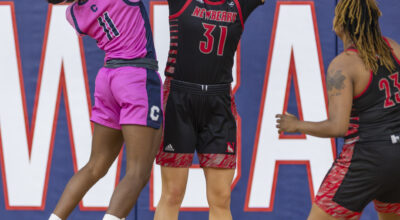My Turn: Beyond the riots
Published 12:37 am Monday, July 17, 2017
By Pete Prunkl
Mark Wineka’s article (July 13, 2017) about John Smith, the Salisbury man whose beating triggered the Newark Riots of 1967, added a local and personal dimension to one of the darkest moments in the late 20th century. Until Mark’s article, I had no idea of that connection between Salisbury and Newark. In one significant way, the story Mark relayed has an ending that few could have imagined 50 years ago.
My high school, St. Benedict’s Prep, was a few blocks from where much of the looting and burning took place. When I attended eight years earlier, St. Benedict’s catered to white guys like me from the New Jersey suburbs and cities. In the years following the riots, enrollment declined drastically. The Benedictine monks who ran the school were divided. Some wanted Benedict’s to stay open while others wanted to transfer to a more stable and comfortable teaching environment. In 1972, St. Benedict’s became a casualty of the residual tensions stemming from the Newark Riots. After 104 years, it closed its doors.
The priests that stayed in Newark took jobs as teachers, delivery men, counselors and chaplains. Five months after it closed, a young upstart, Fr. Edwin Leahy and his buddy Fr. Albert Holtz, became the heart and brains of a new academy. They envisioned a school that stayed open 11 months of the year, provided unlimited possibilities for learning outside the classroom, counted on parental involvement and, most importantly, admitted guys who lived in the surrounding neighborhood. These would be young African-Americans and Hispanics, who like the Germans and Irish before them, would walk to school wearing the Benedict’s colors.
Ever the planner, Fr. Albert crafted a new framework for the school, one that blended ideas from the Boy Scouts, the Golden Rule and the Marine Corps as well as curriculum and budget experts. Key would be three phases of the school year — a blend of academics, hands-on experience and leadership training. Thinking they had something that parents would value, school officials raised, not lowered tuition.
In July 1973, one year after it closed, St. Benedict’s Prep reopened with a student body that was 75 percent African- American. Learning became a two-way street. The priests learned of the fears, rejections and violence Newark students experienced every day. Students learned discipline, sports and the school’s harsh motto: “Benedict’s hates a quitter.” To raise funds Fr. Edwin sold Benedict Field, a track and football stadium in suburban Newark for $525,000.
John Smith died at the Salisbury VA Hospital in 2002. Today, St. Benedict’s Prep and Fr. Edwin are still in business. New to Benedict’s in the past 42 years are soccer fields, swimming pool and basketball courts, all open to the kids in the neighborhood. Today, over 90 percent of Benedict’s grads go on to college. Those startling statistics are part of John Smith’s legacy.
CBS recently did a segment on St. Benedict’s for 60 Minutes. If you want to see for yourself what Benedict’s is about, check out www.sbp.org/60Minutes. For a more detailed view, read Thomas McCabe’s “Miracle on High Street.”
Pete Prunkl lives in Salisbury and is a proud graduate of St. Benedict’s Prep.
My Turn submissions should be 500-700 words in length. Please email to letters@salisburypost.com with “My Turn” in the subject line. Include name, address, phone number and, if possible, a digital photo of the writer.


